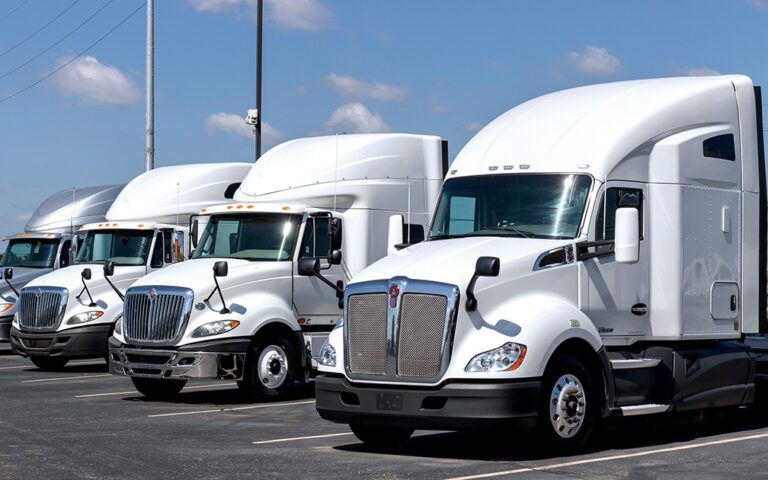If trucking companies had a rough second quarter, truck manufacturers and dealers arguably had it worse. According to FTR’s latest estimates, June Class 8 orders hit just 8,900 units — down 25% from May and a whopping 36% from last year. July was better at 12,700 units, but still 7% below last year’s pace. Over the past 12 months, orders are off 15% year-over-year. Drag Cummins CEO Jennifer Rumsey told investors she expects heavy- and medium-duty truck volumes in North America to fall another 25–30% in Q3. OEMs are already cutting work weeks. She said the recovery depends on economic conditions, trade policies, and regulatory clarity.

If trucking companies had a rough second quarter, truck manufacturers and dealers arguably had it worse.
According to FTR’s latest estimates, June Class 8 orders hit just 8,900 units — down 25% from May and a whopping 36% from last year. July was better at 12,700 units, but still 7% below last year’s pace. Over the past 12 months, orders are off 15% year-over-year.
Cummins CEO Jennifer Rumsey told investors she expects heavy- and medium-duty truck volumes in North America to fall another 25–30% in Q3. OEMs are already cutting work weeks. She said the recovery depends on economic conditions, trade policies, and regulatory clarity.
Nobody was more blunt than Rush Enterprises CEO Marvin Rush, who said new truck production will be “drastically down across all OEMs” simply because “there’s just not any demand out there.”
The industry’s regulatory environment isn’t helping. The EPA’s recent decision to pull back its authority to regulate greenhouse gases has created fresh uncertainty over upcoming NOx and GHG standards. Manufacturers and buyers alike don’t know what final emissions rules will look like — or how much compliance will cost.
California’s stalled zero-emission truck mandates have also left Class 8 sales in the state in a slump for over a year. Rush warned he doesn’t want to see the rest of the country follow California’s struggles.
Still, there were a few glimmers of optimism. Rush said Q2 demand was “slightly better” than Q1, and Daimler Truck CFO Eva Scherer noted a July pickup in orders. Daimler sold 135,000 trucks in North America in the first half — down 7% from last year — but is now forecasting 135,000–155,000 for the current quarter.
Tariffs remain another wildcard. PACCAR CEO R. Preston Feight said customer confidence would improve if trade rules stabilize in Q3. But higher input costs may push up prices for 2026 orders.
As Wabash National CEO Brent Yeagy put it, even with 95% domestic sourcing, rising costs are catching up: “We’ve held off on price hikes so far, but based on the current trajectory, we’ll need to adjust for 2026.”
Bottom line — until the economy, trade policies, and emissions rules settle down, the heavy truck market will be running in the slow lane.